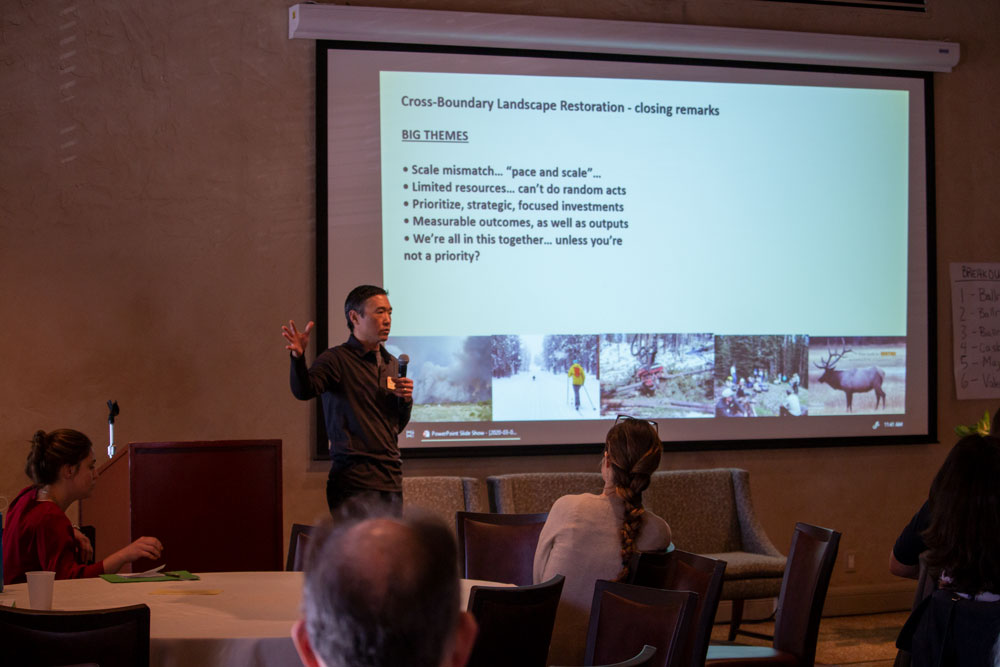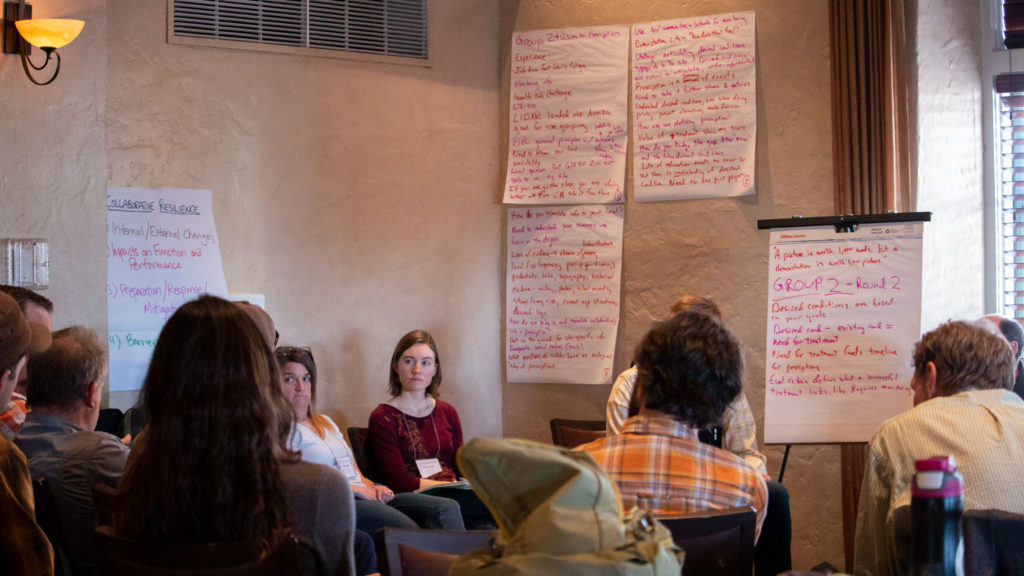
CSU institute brings western land managers together
by: Hannah Brown
When Congress passed the Southwest Forest Health and Wildfire Prevention Act in 2004, the Colorado Forest Restoration Institute (CFRI) and sister organizations, the Ecological Restoration Institute at Northern Arizona University and the New Mexico Forest and Watershed Restoration Institute, were tasked with promoting collaborative processes and adaptive ecosystem management in the face of threats from increasingly severe wildfires in the Western U.S.
During the first week of March, before travel restrictions were put into place, the Institutes came together in Albuquerque, New Mexico with other natural resource partners to advance this mission.
Members of CFRI and its partnering institutes planned and hosted a Cross Boundary Landscape Restoration Workshop attended by more than 150 land management representatives from 55 federal and state agencies, non-profits, environmental groups, universities, and community collaboratives.
The Institutes designed the workshop around peer-to-peer learning in small groups. CFRI Assistant Director Brett Wolk said this model could better tackle the tangled web of challenges and opportunities collaborative forest management work has experienced in recent years.
“Forest and fire management is incredibly complex, and it takes a huge variety of people with different expertise working together to make a difference,” he affirmed. “We wanted people learning from each other and talking with each other, rather than at each other.”
Workshop participants broke into small groups and discussed lessons learned, shared success stories and disseminated information about new science-based tools and frameworks that help managers prioritize where they work on huge forested landscapes.
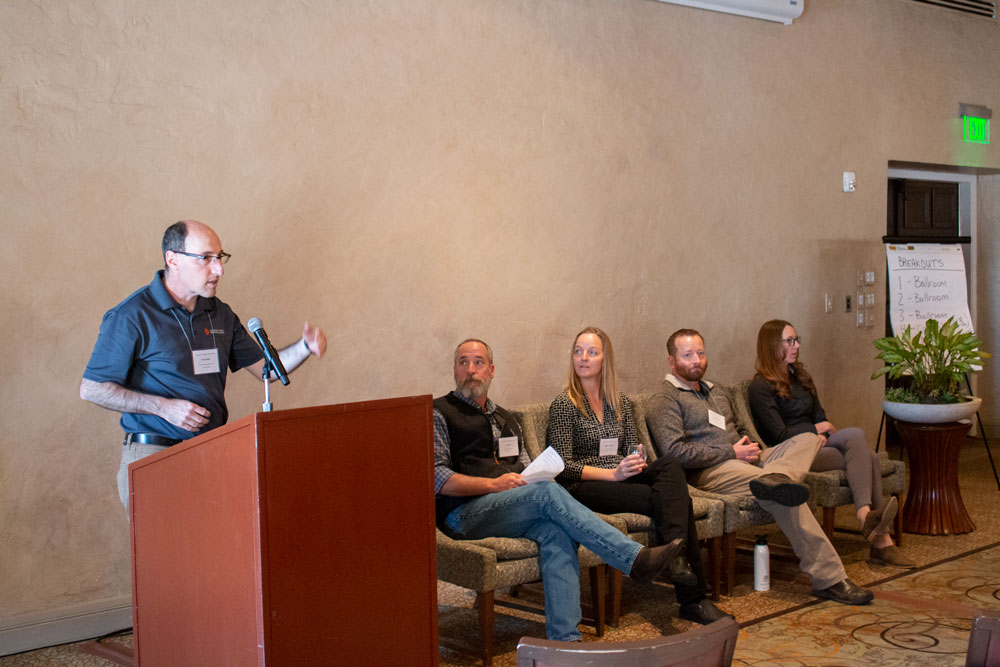
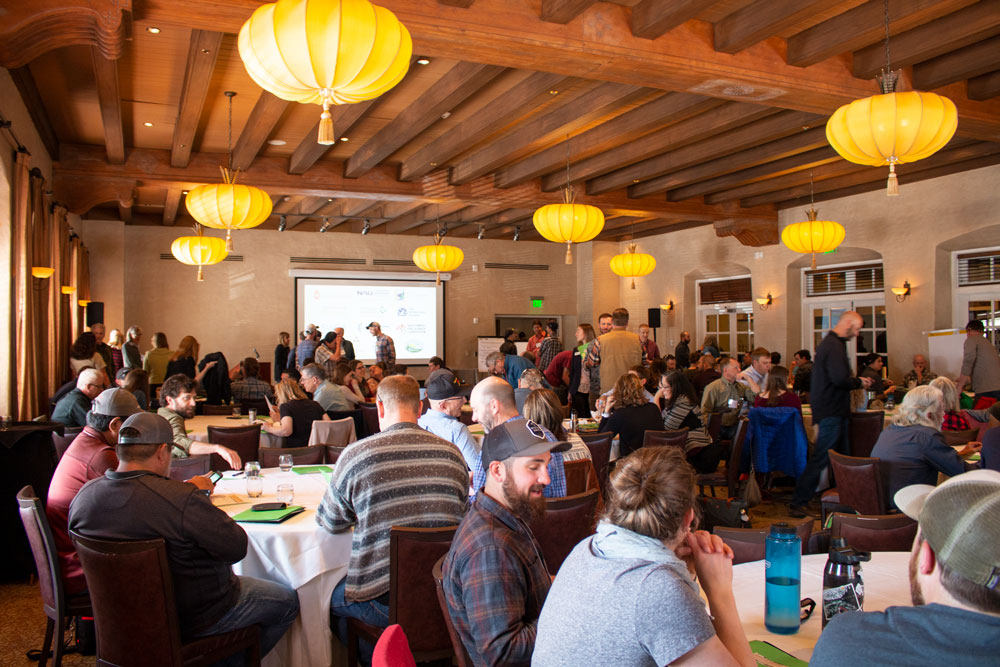
Defining the task at hand
Many speakers, including USDA Forest Service Chief Vicki Christiansen, acknowledged the magnitude of the challenge at hand, and identified collaborative relationships as a means to take action.
Determining whether collaborative work has been successful is challenging. The success of forestry projects has historically been measured as a “target output,” such as the number of board feet of wood that comes from cutting down trees in the forest.
Colorado State University Associate Professor Courtney Schultz and Christiansen discussed the difference between an output and an outcome as a means of gauging impact. While outputs are used to evaluate projects, Schultz said that outcomes such as wildfire risk reduction, improved wildlife habitat, and the incorporation of local collaboratives in decision-making can assess the success of a project.
“Measuring outcomes is really challenging but is going to be essential for the Forest Service and partners to make sure the work they are doing is making a meaningful difference on the landscape and for communities,” Schultz said.
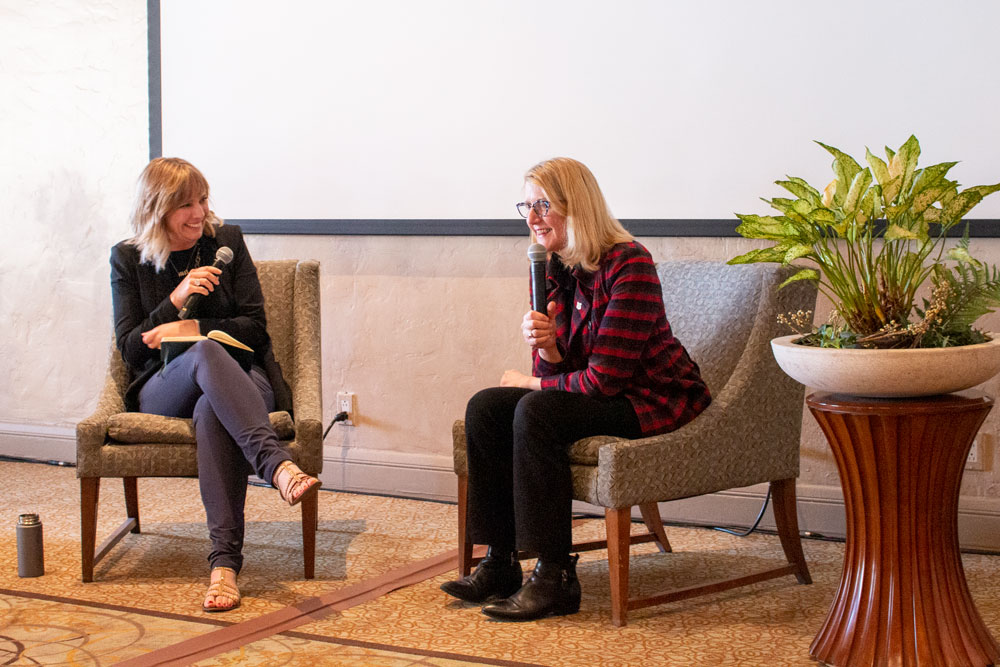
Peer-to-peer learning
A prevalent conversation topic within groups was how to get new scientific information incorporated into work on the ground. The discussions were supported by a team of facilitators that included CFRI staff and staff from other Institutes.
“As a facilitator, it was great to see forest practitioners and their high capacity technical partners sharing innovations in small groups,” said Amy Waltz, director of science delivery at the Ecological Restoration Institute.
“Attendees from Arizona, New Mexico and Colorado were sharing common concerns but then taking it a step further, getting new ideas and connecting with resources that may help address those concerns.”
Groups learned about how peers in other agencies and collaboratives have used adaptive planning approaches to solve natural resource problems. CFRI’s own participation in the Spruce Beetle Epidemic and Aspen Decline Management Response project was held up as an illustrative example. CFRI incorporated the community’s desire for information about salvage logging effects on Canada lynx habitat into its forest monitoring plans. Addressing community concerns and incorporating them into decision-making builds trust between land management agencies and the public.
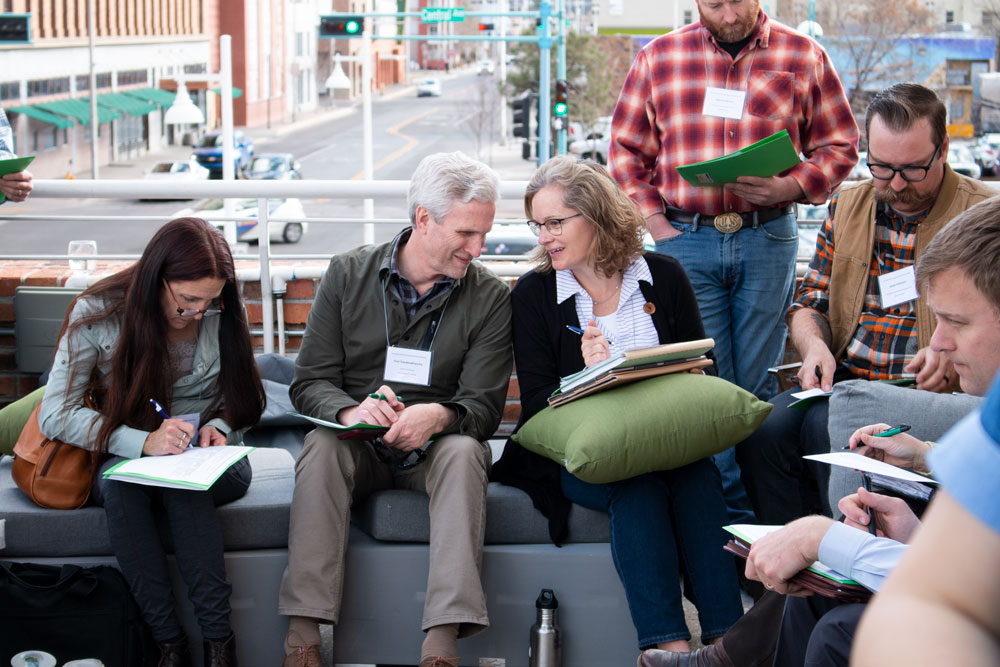
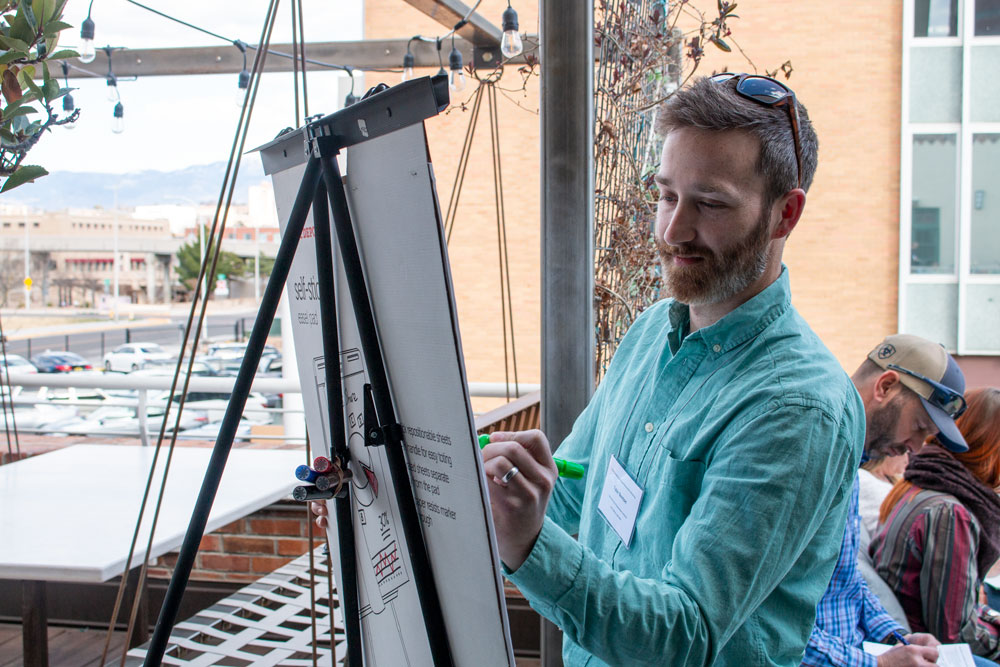
Managers are grappling with trying to create complexity in forests using “variable density thinning,” a technique that deliberately creates non-uniform conditions throughout a forest. Jens Stevens of the U.S. Geological Survey said patience is needed in the pursuit of collaborative work that seeks to re-introduce randomness on forested landscapes on huge scales.
“With restoration using variable density techniques, we’re increasingly asking people to move from being scientists to being artists,” Stevens said. “It’s still painting within some lines, but with more flexibility. That’s a big ask. People will make that shift to being artists in their own time.”
CFRI Director Tony Cheng wrapped up the in-depth conversations with a call to action. He encouraged every person and agency present to evaluate what they and their partners have control over. He said showing up at the table ready to work, supporting each other, taking risks, exerting leadership and spanning boundaries could create inclusive, transparent, and science-informed processes.
“The people who are going to solve these problems were in that room,” Cheng said.
Following a week of networking and problem-solving by participants across the U.S., staff at the Institutes are working to share the results of this workshop and create plans of action with input from the broad diversity of attendees. These recommendations will go on to improve and inform collaborative ecosystem restoration work across the Intermountain West.
